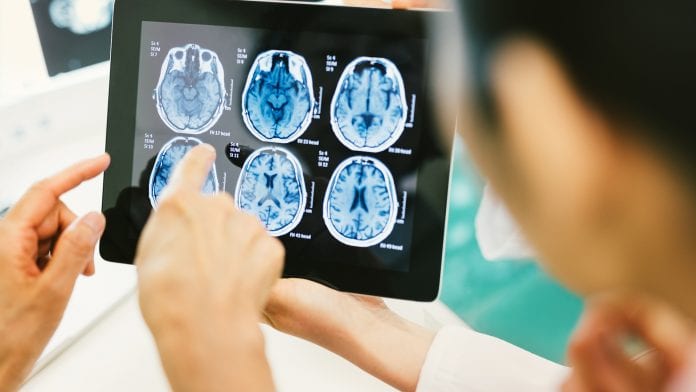
A new study of adolescent and adult athletes has found evidence of damage to the brain’s protective barrier, even with a mild head trauma and without a reported concussion.
For the first time, the researchers at Ben-Gurion University of the Negev (BGU), Stanford University and Trinity College in Dublin, were able to detect damage to the blood-brain barrier (BBB), which protects the brain from pathogens and toxins, caused by mild traumatic brain injury (mTBI).
The results were published this month in the Journal of Neurotrauma.
Mild head trauma
Those who are at high risk of receiving mild head injuries were studied, specifically professional mixed martial arts (MMA) fighters and adolescent rugby players, to investigate whether the integrity of the blood-brain barrier is altered and to develop a technique to better diagnose mild brain trauma.
Prof. Alon Friedman, who established the Inter-Faculty Brain Sciences School at BGU, said: “While the diagnosis of moderate and severe traumatic brain injury (TBI) is visible through magnetic resonance imaging (MRI) and computer-aided tomography scanning, it is far more challenging to diagnose and treat mild traumatic brain injury, especially a concussion which doesn’t show up on a normal CT.”
The study shows that mild impact in professional MMA and adolescent rugby can still lead to a leaky blood-brain barrier. If in a larger study the results are similar, the brain imaging techniques being developed could be used to monitor athletes to better determine safer guidelines for ‘return to play’.
Studying athletes
In this study, MMA fighters were examined pre-fight for a baseline and again within 120 hours following competitive fight. The rugby players were examined pre-season and again post-season or post-match in a subset of cases.
The groups were evaluated using advanced MRI protocol developed at BGU, analysis of BBB biomarkers in the blood and a mouthguard developed at Stanford with sensors that track speed, acceleration and force at nearly 10,000 measurements per second.
Ten out of 19 adolescent rugby players showed signs of a leaky blood-brain barrier by the end of the season. Eight rugby players were scanned post-match and two had barrier disruptions. The injuries detected were lower than the current threshold for mild head trauma. The researchers were also able to correlate the level of blood-brain barrier damage seen on an MRI with measurements from the mouthguard sensors.
Simplistic concussion model
Dr. Friedman said: “The current theory today is that it is the outer surface of the brain that is damaged in a concussion since, during an impact, the brain ricochets off of skull surfaces like jelly.
“However, we can see now that the trauma’s effects are evident much deeper in the brain and that the current model of concussion is too simplistic.”
In the next phase of research, the group plans to conduct a similar study in a larger cohort to determine whether blood-brain barrier disruptions heal on their own and how long that takes.
Dr Friedman said: “It is likely that kids are experiencing these injuries during the season but aren’t aware of them or are asymptomatic.
“We hope our research using MRI and other biomarkers can help better detect a significant brain injury that may occur after what seems to be a ‘mild TBI’ among amateur and professional athletes.”
























